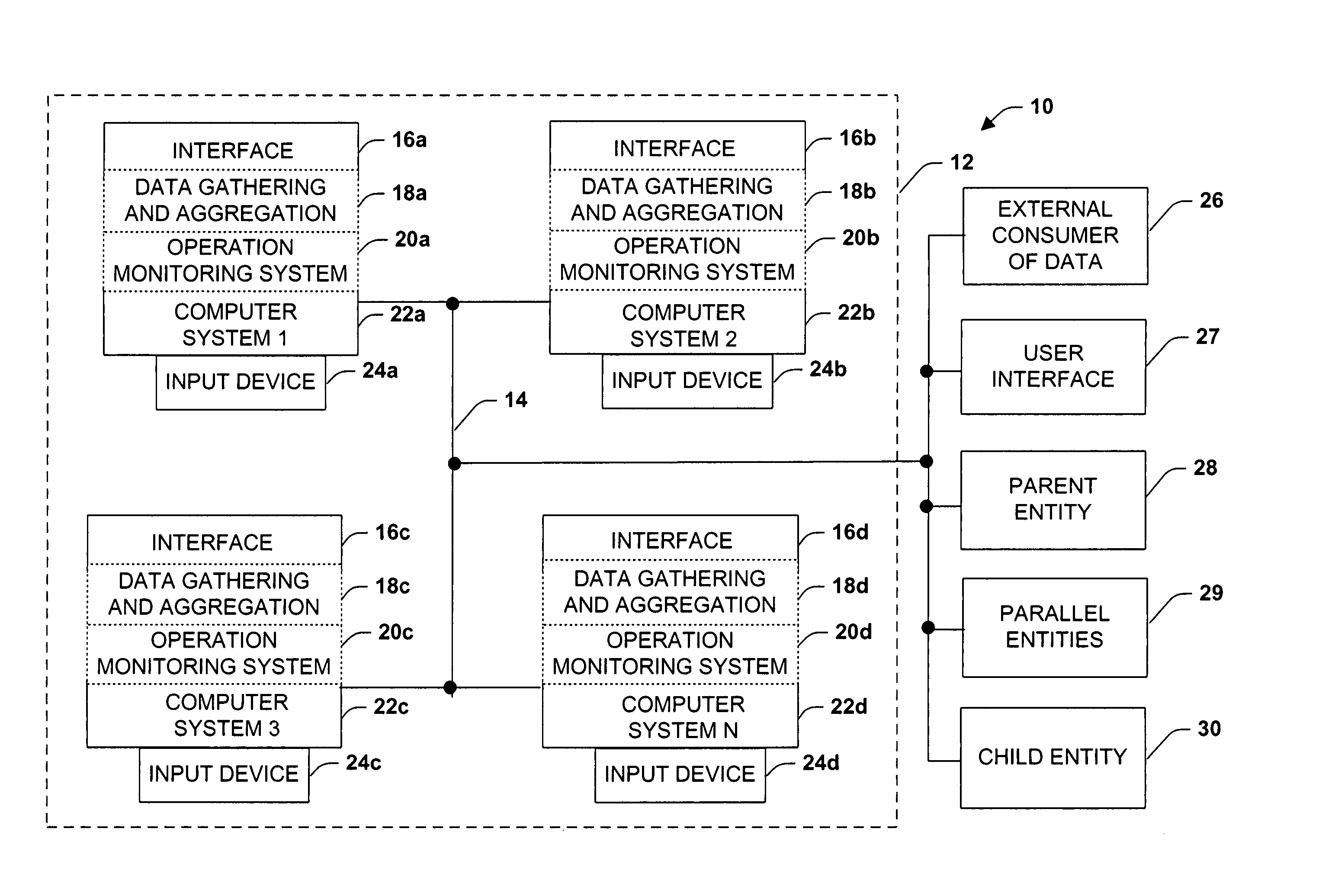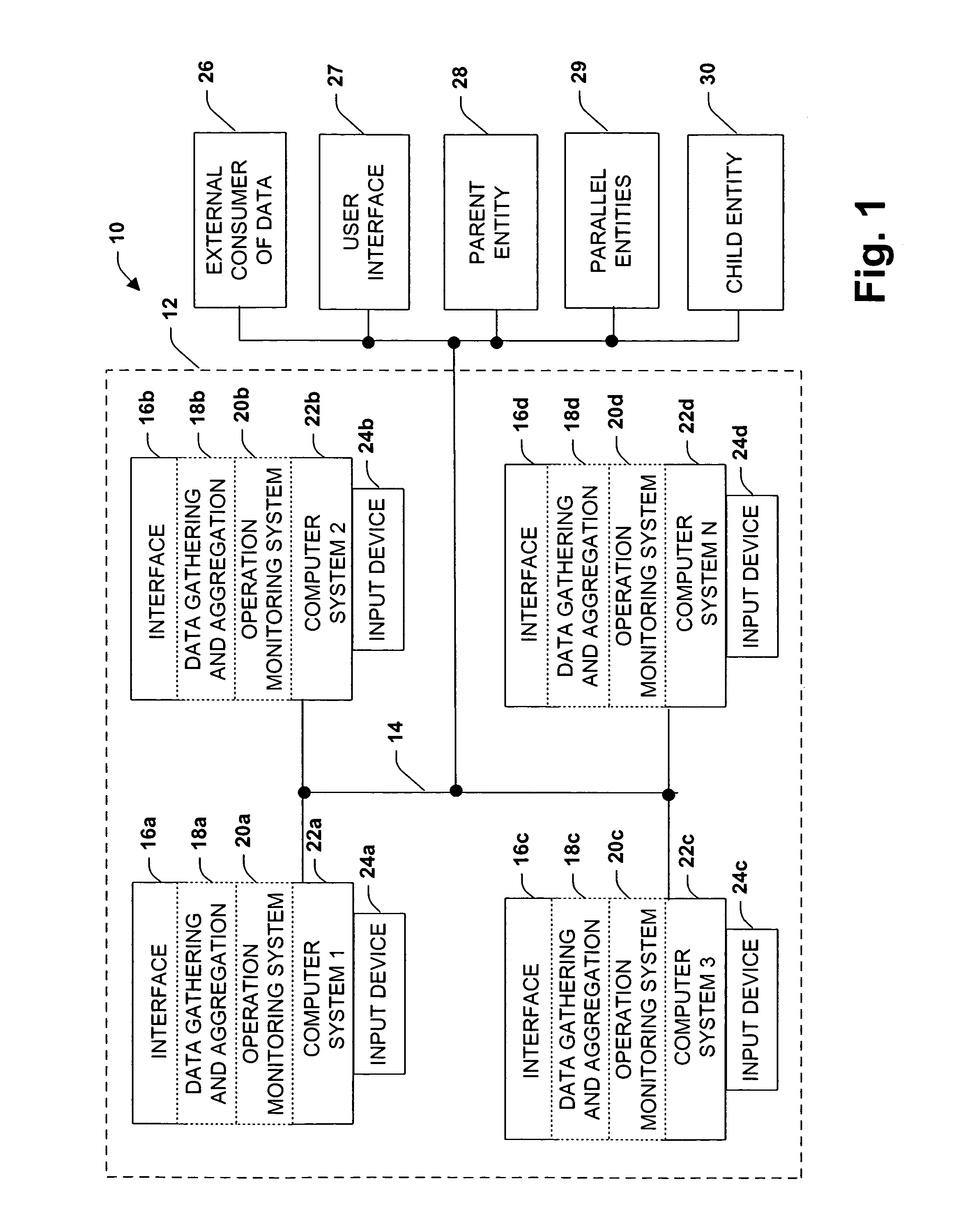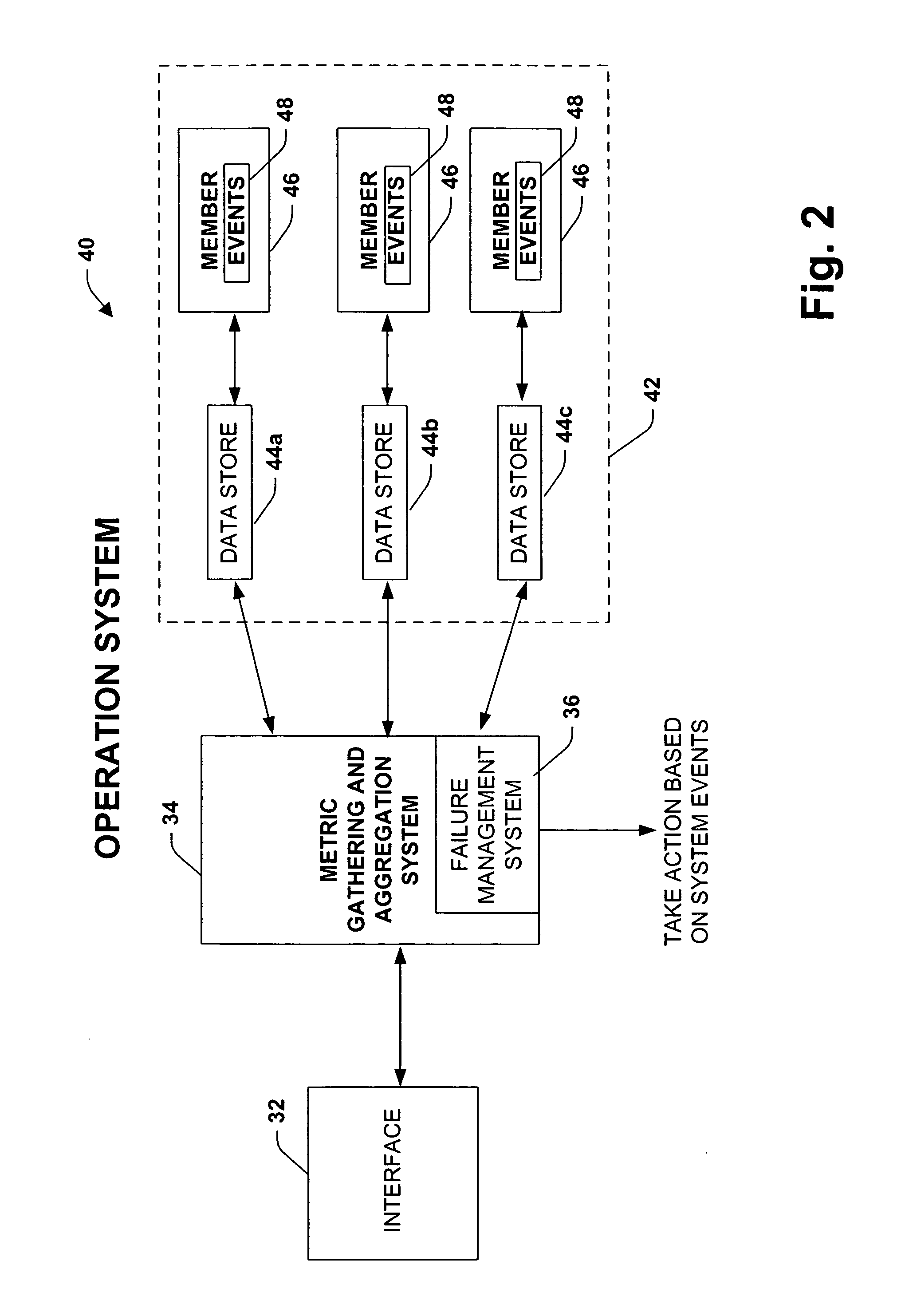Distributed data gathering and aggregation agent
a technology of distributed data and agent, applied in the field of computer systems, can solve the problems of large system complexity, time-consuming, and complex system management and administration of individual servers, and achieve the effect of reducing manageable blocks or portions of event data
- Summary
- Abstract
- Description
- Claims
- Application Information
AI Technical Summary
Benefits of technology
Problems solved by technology
Method used
Image
Examples
Embodiment Construction
[0024] The present invention is now described with reference to the drawings, wherein like reference numerals are used to refer to like elements throughout. The present invention is described with reference to a system and method for gathering and / or aggregating operational metrics from a plurality of members forming an entity. The members of the entity monitor the operational metrics and log this data locally to a data store. An interface can then request operational metrics data from the members via a gathering and aggregation system. The gathering and aggregation system requests and receives operational metrics data from the members based on a requested time period, and in some cases, a particular time resolution and an operational metric. The request can be either for a single member or from all members of the entity. The gathering and aggregation system will then aggregate and format operational metric data for a particular operational metric based on the requested time period ...
PUM
 Login to View More
Login to View More Abstract
Description
Claims
Application Information
 Login to View More
Login to View More - R&D
- Intellectual Property
- Life Sciences
- Materials
- Tech Scout
- Unparalleled Data Quality
- Higher Quality Content
- 60% Fewer Hallucinations
Browse by: Latest US Patents, China's latest patents, Technical Efficacy Thesaurus, Application Domain, Technology Topic, Popular Technical Reports.
© 2025 PatSnap. All rights reserved.Legal|Privacy policy|Modern Slavery Act Transparency Statement|Sitemap|About US| Contact US: help@patsnap.com



